Yes. Insurance for a single day is available.
Worldwide Drive: Explore Right-Hand Traffic Countries and How to Adjust to Driving on the Right
PUBLISHED ON Apr, 11 2024
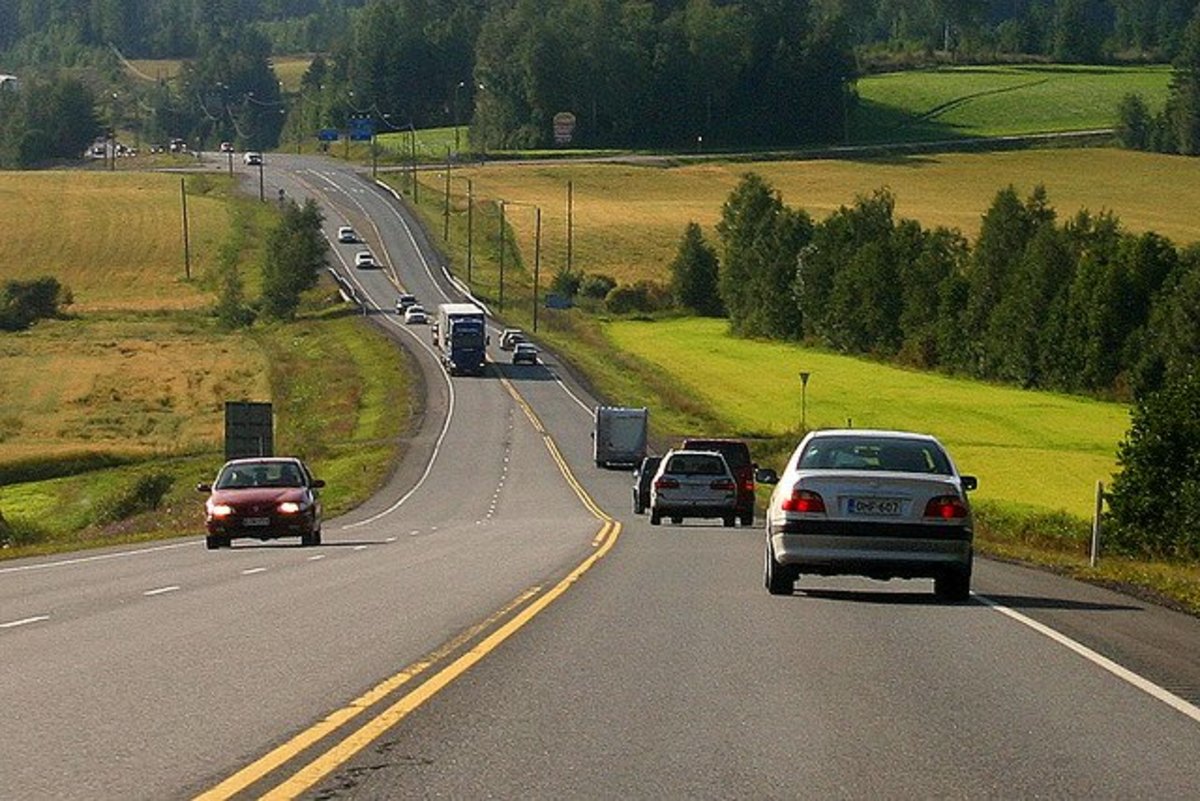
Introduction to Right-Hand Traffic
Understanding Right-Hand Traffic Dynamics
Welcome to your guide through the world of right-hand traffic (RHT)! Whether you’re an avid traveler, a driving enthusiast, or someone looking to broaden your horizons, understanding RHT is key to confidently getting behind the wheel in many parts of the world.
The History and Evolution of Traffic Orientation
Let’s hit the road with a bit of history! Dive into the past to uncover the origins of traffic orientation. You may be surprised to learn that the rules of the road date back long before the invention of the car. In fact, in some US states, right-hand traffic laws were established as early as 1792, catering to wagons rather than automobiles.
Historians have quite the debate when it comes to the reasoning behind the United States’ choice for RHT. One theory suggests that it was the wagon drivers’ preference since most were right-handed, allowing them to hold the reins and a weapon or whip comfortably. Meanwhile, others speculate that America simply sought to distinguish itself from England, which operated on the left.
As the 20th century rolled in, RHT countries were equal in number to those driving on the left. However, from 1919 to 1986, more than 30 nations, many with ties to the British Commonwealth, made a shift to RHT.
Interestingly, a glance at ancient Pompeii’s traffic system shows that cart drivers favored the middle of the road but switched to the right when the traffic volume demanded a clear lane division. Even on the crowded streets of 17th century London, efforts to regulate traffic saw the implementation of rules to manage the flow over London Bridge.
These historical snippets highlight how global traffic orientation has always been about creating order out of chaos, helping travelers to navigate roads both old and new.

Crowded streets of 17th century London
Mapping Out Right-Drive Countries
Total Number: How Many Countries Drive on the Right?
Globally, driving on the right side of the road is the standard in the majority of countries. To put a number to it—approximately 163 countries and territories follow right-hand traffic norms. This means that when they get behind the wheel, drivers find the driver’s seat on the left side of the vehicle and stay to the right side of the road.
This represents roughly two-thirds of countries worldwide and includes the vast landscapes of North America, nearly all of South America, Europe—except the UK, Republic of Ireland, Malta, and Cyprus—and significant parts of Africa. To put it another way, around 75% of the global population adheres to right-hand traffic, which is an intriguing fact to consider for those who live in countries with left-hand traffic rules or when they travel.
If this stirs your curiosity, a detailed chart by data journalist Niall McCarthy depicts countries by left and right-hand traffic, providing a comprehensive overview at a glance.
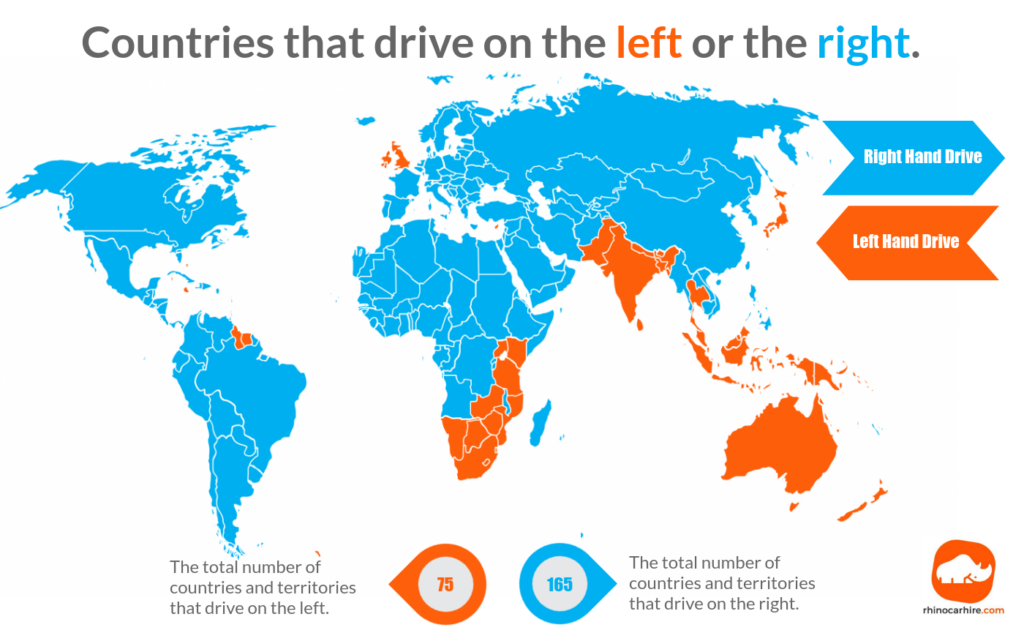
Representation of left-hand and right-hand driving countries
Recognizing Patterns: Continental Trends in Traffic Flow
When surveying the globe for traffic flow patterns, you’ll notice continental trends that color the map in a way that speaks volumes about historical influences and regional practicality.
In the Americas, right-hand traffic holds strong, from the chilly stretches of Canada down to the southernmost tip of Chile. The reason for uniformity across such a large area could be attributed to ease of land-based trade and travel, as well as historical factors like the influence of post-colonial American standards and expansion.
Europe, while predominantly following the right-hand traffic system, presents a fascinating patchwork with the United Kingdom, Ireland, Cyprus, and Malta holding fast to left-hand driving. This split stems from a blend of historical legacy and the practical consideration of neighboring countries’ policies.
Africa displays a mixed scene, reflective of its colonial past, with countries like South Africa and Uganda driving on the left, whereas places like Nigeria and Egypt drive on the right.
Asia shows even more complexity with right-hand driving countries such as China and Vietnam juxtaposed against left-hand drivers such as India and Japan. As always, historical influence, particularly from colonial rule, often explains these differences.
Finally, Oceania presents an inverse representation: nations like Australia and New Zealand operate vehicles on the left, while smaller Pacific nations, some formerly tied to the British Empire, have adopted right-hand traffic for economic reasons or due to changing alignments.
These continental trends offer more than just interesting trivia—they reflect deep-rooted historical relationships and evolving global dynamics.
# Fatality Rates Comparison Between Left-Hand and Right-Hand Traffic Countries
|
Traffic Orientation |
Fatality Rate per 100,000 Vehicles |
|
Left-Hand Traffic |
|
|
Right-Hand Traffic |
Higher accident rates, around 30% compared to left-hand traffic countries |
Navigating the Switch for Left-Hand Drivers
Mental Preparation for the Transition
Shifting from left-hand to right-hand driving requires mental recalibration. It demands an awareness that goes beyond merely knowing the steering wheel has moved. You’re not only adapting to road rules but also reprogramming deeply ingrained driving habits.
The first step is visualization. Before even stepping into a right-hand vehicle, close your eyes and mentally rehearse common driving scenarios from the new perspective. Imagine making turns, switching lanes, and even where the gearshift and controls are located.
Next, try to develop a heightened spatial awareness. In a right-hand traffic system, your positioning in the lane and the distances to other cars—especially on the passenger side—may feel different. Reminding yourself that “tight is right” can help you remember to keep to the right side and avoid veering left out of habit.
Consider starting in less crowded areas or off-peak hours to ease into the transition. Empty parking lots, rural roads, or quiet neighborhoods are safe places to acclimate your reflexes to the new layout without the pressure of bustling traffic.
Lastly, remember that patience is your ally. Give yourself time to adjust and don’t rush the process. Confidence on the road comes with practice and experience.
Practical Tips for Adjusting to Right-Hand Traffic
When the time comes to make the switch from left-hand to right-hand driving, there are several practical tips that you can employ to ensure a smooth transition:
- Familiarize Yourself with the Vehicle: Take time to get to know the controls of a right-hand drive vehicle while stationary. Identify where the indicators, wipers, and gear stick are positioned before hitting the road.
- Ride Along: Before driving, be the passenger in a right-hand traffic environment. Observe how the driver navigates turns, roundabouts, and junctions.
- Start Small: Begin in low-traffic areas or consider taking a driving course in the country you’re visiting to build confidence without the stress of heavy traffic.
- Use Visual Cues: Keep road markings and the positioning of other vehicles in your peripheral vision as a constant reminder of your lane positioning.
- Keep Left, Pass Right: Always remember that the overtaking lane is to your left, and slower traffic should keep to the right.
- Check Both Ways: As a habit from left-hand driving, you may be used to looking in one direction first. In right-hand traffic countries, ensure you double-check both ways, especially when making turns.
- Adjust Your Road Positioning: Remember that the center line is now on your left, and adjust your in-lane positioning accordingly to not drift too close to oncoming traffic.
- GPS Assistance: Use a GPS with lane assist features to help anticipate the road ahead and give extra guidance on multi-lane roads or one-way systems.
- Stay Alert and Patient: Remain vigilant, keep a calm demeanor, and don’t rush your decisions on the road. Patience helps in reducing stress and the chance of making mistakes.
- Use Reference Points: Pick a point on the windshield (a sticker, for example) to line up with road lines. This can help keep a consistent lane position.
These suggestions not only safeguard your well-being but also contribute to safer roadways for everyone.
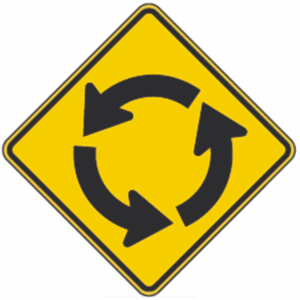
Roundabout signs used in USA
The Importance of Car Hire Insurance When a Left-Hand Driver is Renting a Vehicle in a Right-Hand World
Car Hire Excess Insurance is a vital consideration for anyone planning to rent a car in the USA or Europe. This insurance type covers the excess charges that car rental companies may impose in case of damage, loss, or theft of the vehicle. Given that these excess fees can sometimes reach up to $ 4,500 or more, understanding how Car Hire Excess Insurance works can save you from unexpected financial burdens.
See How Much You Can Save on Your Rental Car Insurance
Get StartedAdaptation Tips:
- Vehicle Orientation: Be aware that if you’re hiring a car in a right-hand traffic country, it will likely be left-hand drive (LHD), which can take some getting used to if you’re from a left-driving nation.
- Safety Requirements: Equip your rental with any legally required safety items, such as a reflective jacket, warning triangle, and first aid kit.
Whether you’re winding through the Italian countryside or cruising the coastal roads of California, renting a car is a great way to discover the delights of a new destination. Just make sure you’re well-prepared, correctly insured, and ready to adapt to local driving laws.
Vehicle and Roadway Considerations
Steering Wheel Position and Vehicle Layout
Navigating the intricacies of a vehicle’s layout in right-hand traffic countries can be like piecing together a puzzle for a driver accustomed to left-hand driving. You’re not just sitting on the opposite side; the orientation of the entire driving console has flipped.
In a right-hand traffic system, the driver’s seat and the controls are positioned on the left side of the car. This switch means that your muscle memory for reaching the gear shift or interacting with the center console will need a makeover. The good news is that the pedals remain in the same order – clutch on the left, brake in the middle, and gas on the right – providing some continuity in the driving experience.
You may also find that some controls traditionally designed for the right-handed convenience of the driver in left-hand drive vehicles are now less ergonomically placed. It’s a quirk that stems from manufacturers mirroring their left-hand drive designs for right-hand drive markets without reconfiguring all elements. Consequently, functions like the audio volume or climate controls could be a stretch away.
In the event that a manufacturer does offer a bespoke right-hand drive design, they may utilize modular dashboards, where controls can be reordered to better suit the driver’s reach – a more practical yet less common solution.
For a smooth adjustment, take a few moments before driving to note these changes and plan your reach and responses accordingly. A little preparation can prevent distraction later down the road.
Infrastructure and Signage in Right-Hand Traffic Nations
In countries with right-hand traffic, road infrastructure and signage are designed to guide you intuitively through your journey. There are, however, distinct elements you should be mindful of.
Even though the fundamental signs such as stop signs and yield signs retain universal shapes and colors, their placement and some symbolic nuances may differ from what left-hand drivers are used to.
Pay special attention to directional signs and arrows, which will point to the right instead of the left. Lane markings, too, follow the flow of traffic, so you’ll find that passing lanes, merges, and exits will be on your left side, which can initially be a source of confusion.
Traffic lights are typically positioned on the right side of intersections or overhead, and in some countries, there may be a secondary set of lights on the far side or near side for better visibility when you’re the first car in line.
Pedestrian crossings, one-way streets, and roundabouts will also necessitate a rightward mindset. Take special care to look to your right for pedestrians or oncoming traffic where your reflex may have been to check the left.
Understanding these nuances in road design will help you maintain compliance with local traffic laws and ensure your safety as well as others. If in doubt, take a moment to observe the actions of local drivers or consider asking for directions or tips.
John Smith, a British expatriate who moved to Japan, shared his experience: “Switching from driving on the left to the right was daunting at first. I constantly found myself drifting towards the wrong side of the road. However, with practice and patience, I gradually adapted to the new system.”
The Importance of Adaptation for Travelers
Impact on Tourism: Embracing Local Traffic Laws
For travelers, adapting to local right-hand traffic laws isn’t just about safety; it’s also about respect and legal compliance while abroad. Whether you’re embarking on a self-driven tour across the European countryside or renting a car for convenience in a bustling metropolitan area, acknowledging these norms is vital.
Embrace local traffic laws by researching in advance. Most countries offer resources for visitors which lay out the key differences in road regulations. Remember, as a visitor, adhering to local driving etiquette is as crucial as following the law, and it can enhance your travel experience by reducing the stress of navigating unfamiliar roads.
Tourism organizations often highlight driving as part of the adventure and may offer workshops or guides on how to drive like a local. Participating in these can not only improve your understanding of the rules but also provide an authentic insight into the local culture.
Moreover, travel insurance companies pay close attention to your compliance with traffic laws. Respecting these rules ensures any claims you might need to make are valid and eliminates unnecessary legal complications.
Overall, driving in a manner harmonious with local customs makes your travels smoother and enriches your international experiences.
Here’s a comparative table summarizing the main differences between right-hand and left-hand traffic regulations:
|
Aspect |
Right-Hand Traffic Countries |
Left-Hand Traffic Countries |
|
Driving Side |
Right |
Left |
|
Overtaking |
Left |
Right |
|
Roundabout Direction |
Clockwise |
Anti-clockwise |
|
Vehicle Configuration |
Right-Hand Drive |
Left-Hand Drive |
|
Traffic Laws |
Followed |
Reversed |
Safety Measures for International Drivers
Your well-being on foreign roads is paramount. Before you embark on your international driving adventure, it’s wise to put safety measures in place.
Car Safety Kit: In many countries, it’s compulsory to carry certain items in your vehicle. These can include a reflective jacket, warning triangle, first aid kit, and sometimes even a fire extinguisher. Check the specific requirements of your destination before you travel.
Local Emergency Numbers: Have the local equivalent of 911 saved in your phone. Being prepared to contact emergency services if needed could be lifesaving.
Insurance and Roadside Assistance: Ensure your motor insurance policy covers international driving. Also, consider a plan that includes roadside assistance for added peace of mind.
Adjusting to the Vehicle: If you’re driving your own vehicle in a right-hand traffic country, you may need items like headlight converter stickers to avoid dazzling other drivers and perhaps a nationality plate for your car.
Knowing the Legal Limit: Be informed about the alcohol limits and drug driving laws, which can vary significantly between countries.
Child Safety: For those traveling with young children, be aware of the local laws on child seats and restraints. These laws are not only safety measures, but also legal requirements and can differ from those in your home country.
By thinking ahead, you can ensure that your journey is not only enjoyable but also as safe as possible.
Legal Implications and Cross-Border Challenges
Driving with a Foreign License in Right-Hand Traffic Countries
When crossing borders, drivers often wonder about the legality of driving with a foreign license. The rules can vary, but here’s a general rundown:
Most right-hand traffic countries recognize foreign driver’s licenses, but often only for a limited period, usually ranging from 30 days to a year. This means that if you’re visiting on holiday or a short business trip, you should be covered. However, always check the specific requirements for each country, as they can vary widely.
In addition to your driver’s license, carrying an International Driving Permit (IDP) is highly advisable, and in some countries, it’s mandatory. An IDP serves as a translation of your national driving license and is recognized internationally.
Be mindful that special conditions may apply. For example, age restrictions, license class, and driving endorsements might affect your ability to drive abroad. Furthermore, in the event that you’re staying long-term or becoming a resident, most countries will require you to take a local driving test and obtain a domestic license.
Make sure to keep your driving license, passport, and IDP together as you may need to show them all if you’re stopped by the police or when renting a vehicle.
Understanding and complying with these regulations will help ensure your driving experience abroad is both legal and hassle-free.
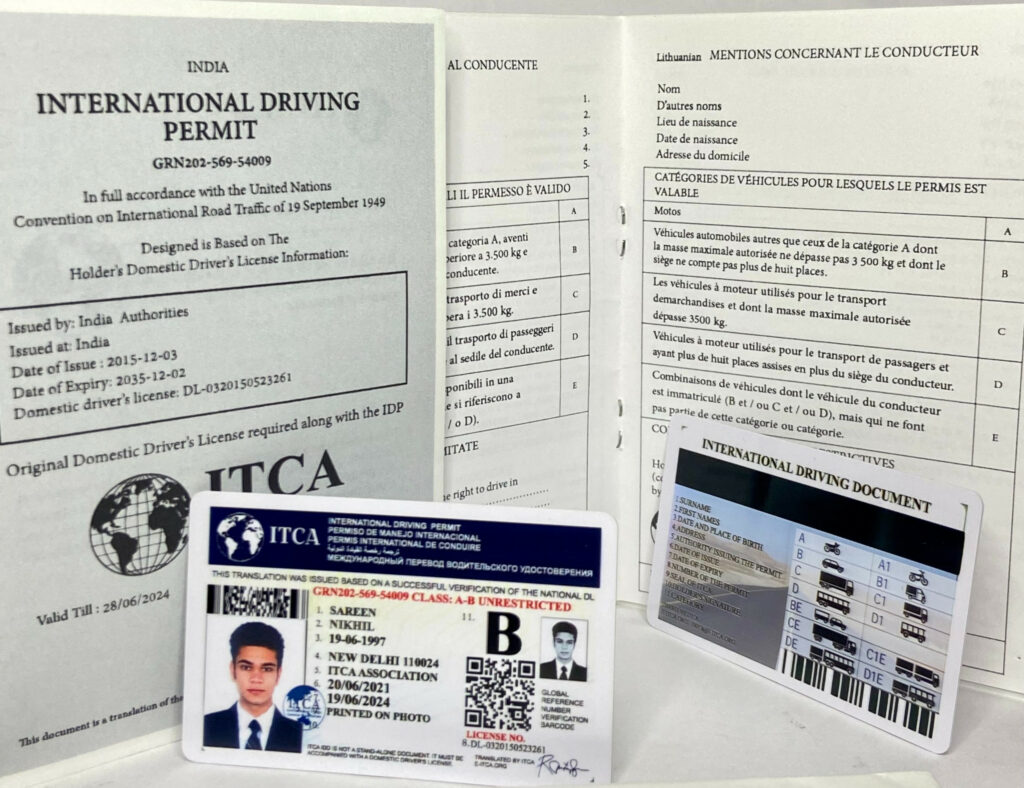
International Driving Permit
Technology’s Role in Simplifying the Changeover
Navigational Aids and Driving Assistance Apps
Adapting to right-hand traffic becomes significantly easier with the help of technology. Various navigational aids and driving assistance apps not only provide directions but also enhance your understanding of local driving customs and laws.
Popular Driving Apps:
- GPS Navigation: Devices and smartphone apps like Google Maps or Waze offer turn-by-turn directions. They highlight the local driving conditions, traffic congestion, and can even suggest the best lane to be in.
- Translation Apps: Apps like Google Translate can be invaluable if you encounter road signs in a foreign language, ensuring you understand important information.
- Local Traffic Apps: Look for region-specific apps that provide updates on road conditions, speed camera locations, and local traffic laws.
Driving Assistance Technology:
- Parking Assist: Rear-view cameras and parking sensors can alleviate the stress of reverse parking, which can feel counter-intuitive when you’re driving in an unfamiliar orientation.
- Collision Avoidance Systems: These systems can alert you if you’re drifting out of your lane or if there’s a risk of collision, which is especially useful when navigating new traffic patterns.
- Adaptive Cruise Control: It maintains a set distance from the vehicle in front of you, helpful in maintaining speed limits and easing driver fatigue on long journeys.
While technology is a great ally, remember it’s there to assist, not replace your judgement. Always prioritize staying alert and focused on driving, using tech as a complementary tool to boost safety and confidence on the road.
Advanced Vehicle Features for Right-Hand Traffic Adaptability
Modern vehicles come packed with advanced features designed to make adapting to right-hand traffic more intuitive and less stressful for drivers who are accustomed to left-hand traffic norms.
Top 5 Features to Look Out For:
- Lane Departure Warning System: This alerts you if you drift out of your lane, which is a common challenge when adjusting to driving on the opposite side of the road.
- Adaptive Headlights: These adjust the direction and range of the vehicle’s headlights dynamically with steering and speed, improving visibility especially on unfamiliar roads at night.
- Blind Spot Monitoring: An essential feature that signals the presence of vehicles in the driver’s blind spot, a particular concern when your driving position has shifted.
- Rear Cross Traffic Alert: When reversing, especially out of parking spaces, this feature warns you of approaching traffic from the sides, which may come from the opposite direction than you’re used to.
- 360-Degree Camera Systems: Offering a bird’s-eye view of your surroundings, these cameras make maneuvering in tight spaces easier regardless of which side of the road you’re accustomed to driving on.
Benefits:
- Increased Safety
- Enhanced Situational Awareness
- Reduced Fatigue and Driver Stress
- Assistance With Parking and Tight Space Maneuvering
- Supports a Smoother Transition to RHT
Cons:
- Possible Over-reliance on Technology
- Availability Varies by Make, Model, and Rental Options
Best Suited For: Travelers renting a vehicle abroad or purchasing a car in a right-hand traffic country who are looking for peace of mind as they adjust to new traffic patterns.
Worldwide Shifts and Future of Traffic Orientation
Potential Alterations in National Traffic Regulations
As nations evolve and assess their traffic systems, changes to traffic regulations are always on the horizon. Governments may consider alterations to traffic laws for a number of reasons, from improving road safety and reducing congestion to adapting to new vehicle technologies and environmental concerns.
While a wholesale switch from left-hand to right-hand traffic—or vice versa—is rare and historic, smaller-scale legislative updates are more common. These can include the implementation of new speed limits, modifications to turn laws, updating signage, and introducing toll systems or low-emission zones.
Keep in mind that such changes are often accompanied by public awareness campaigns and a grace period for drivers to adjust. As an international driver, staying informed through official transportation websites and news outlets is crucial for compliance and safe driving.
Future changes to national traffic regulations can also be influenced by increasingly sophisticated car technologies, such as autonomous driving systems, and by international agreements aimed at standardizing road safety laws across borders.
Globalization and Its Effects on Driving Norms
Globalization has a profound impact on driving norms, creating a more interconnected and standardized experience behind the wheel.
As the global community becomes more integrated through trade, travel, and technology, there’s a natural trend towards the standardization of traffic regulations and driving practices to facilitate international movement and commerce.
Manufacturers produce vehicles that cater to diverse markets, but also maintain certain international standards for design and safety. This results in vehicles that, while tailored for left- or right-hand traffic, offer familiar interfaces to drivers worldwide.
Furthermore, the rise in global tourism and expatriate communities has heightened the need for consistency in road signage, driving laws, and license recognition. This intermingling of cultures brings about a shared understanding and, increasingly, a drive towards adopting best practices from multiple jurisdictions to enhance road safety and efficiency.
Moreover, the global push for sustainability influences driving norms, too, with electric vehicles and smart transportation systems becoming more common and altering infrastructure needs and driving behaviors.
Globalization’s role in shaping driving norms is a testament to how mobility is evolving in our interconnected world, with every driver playing a part in this ongoing transformation.
FAQs
Is it Safe for Left-Hand Drivers to Drive in Right-Hand Traffic Countries?
Yes, it is safe for left-hand drivers to drive in right-hand traffic countries, provided they take time to familiarize themselves with the local road rules, adapt to the vehicle layout, and remain vigilant on the road. Many left-hand drivers successfully make this adjustment every day with proper preparation and a cautious approach.
[Include a brief pointer towards safety tips and resources for left-hand drivers making the transition, such as driving guides and courses.]
Are there International Driving Permits for Right-Hand Traffic Regions?
International Driving Permits (IDPs) are recognized in most right-hand traffic regions and serve as a supplementary document to your native driver’s license. An IDP can facilitate car rental and may be required in some countries for driving legally as a tourist.
Travel Tips and Guides
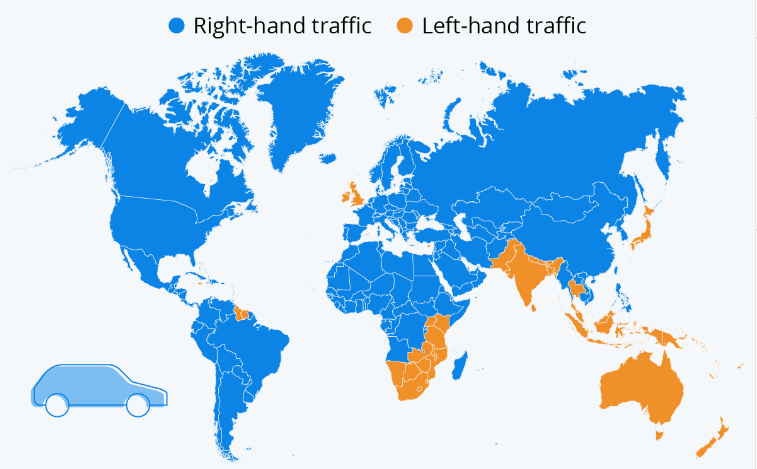
Countries That Drive on the Left: Find Out Which Countries Drive on the Left Side of the Road
Gil Farkash

Driving in Mexico: Rules, Tips & Requirements
Gil Farkash
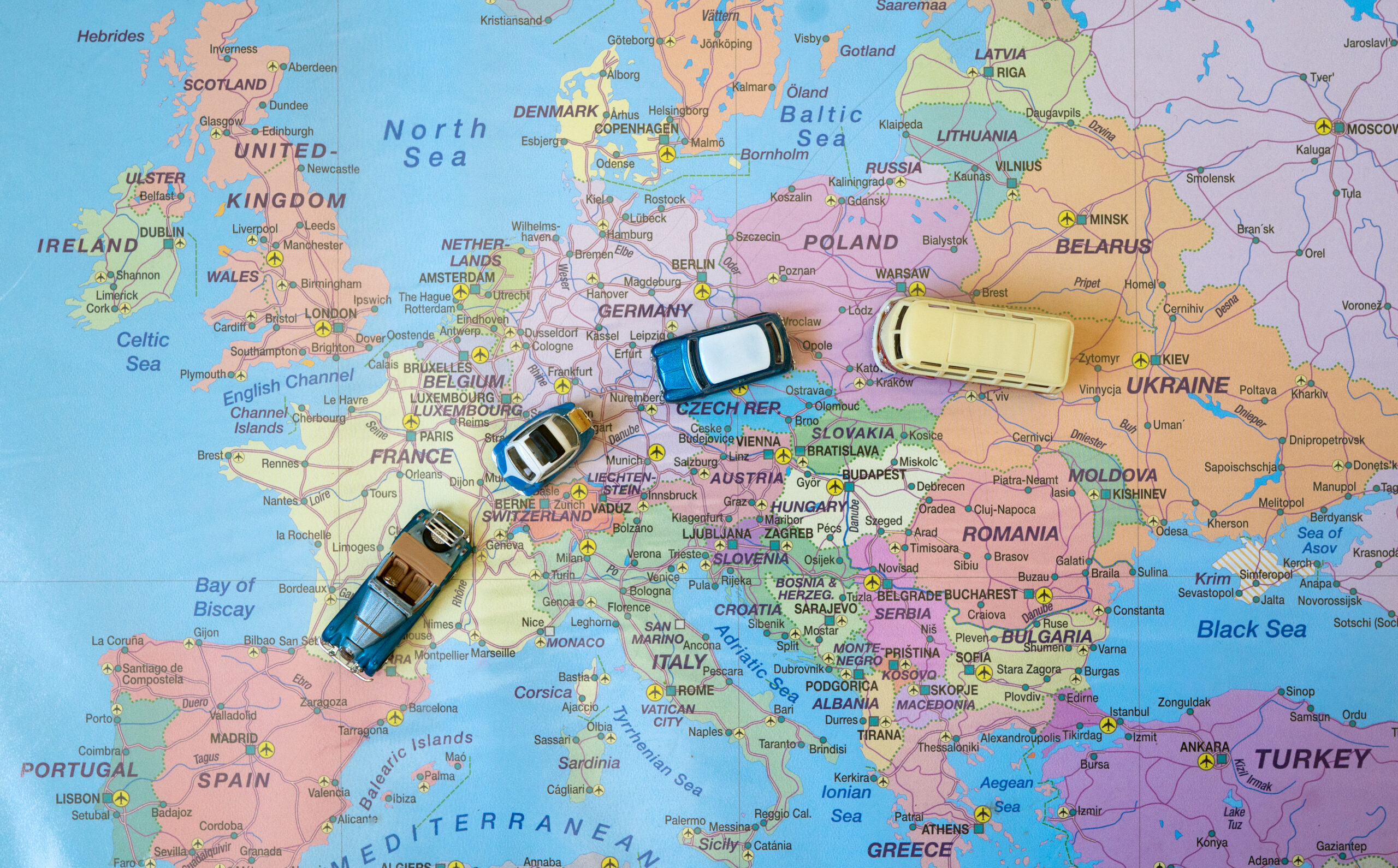
Driving in Europe Simplified: A Traveler's Guide to Euro Road Rules
Gil Farkash
Frequently Asked Questions (FAQ)
No. We provide a single journey plan. You are covered from the time you pick up the rental car up to the time you return it or on the last date written on your Certificate of Insurance, whichever comes first.
No. You should purchase a policy before starting your travel.
Find the answers you’re looking for to the most frequently asked car hire insurance questions as well as other questions relating to our products and services.
